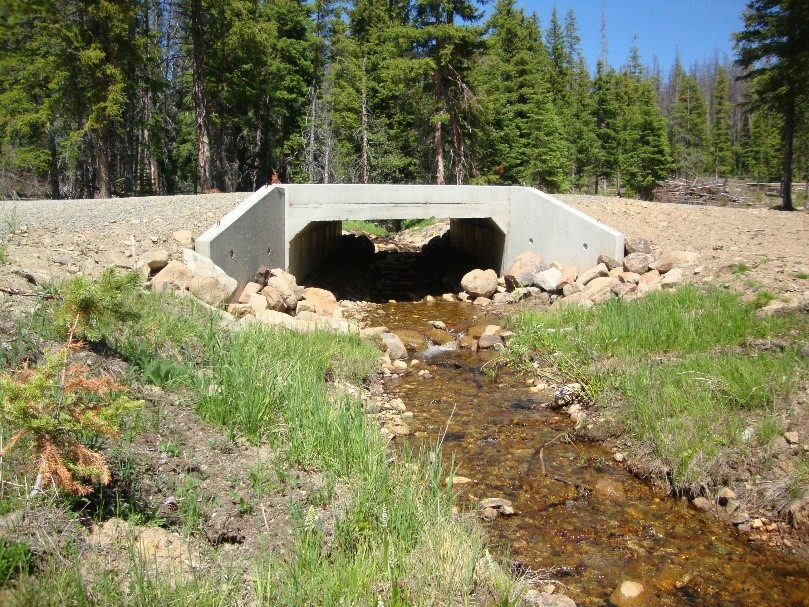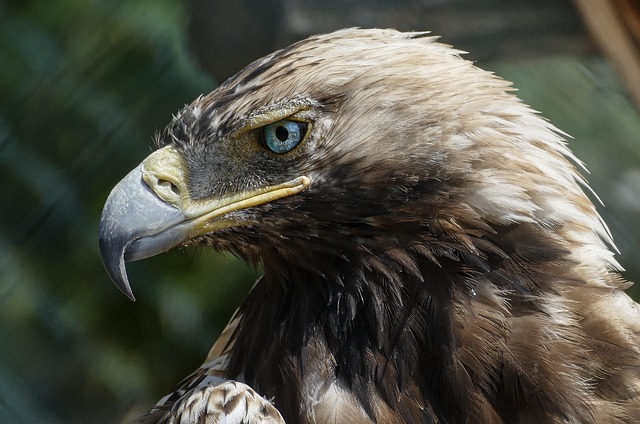If you’re looking to stay informed and educated on the pressing issue of climate change and biodiversity loss, look no further than the captivating new product, “4. Climate Change and Biodiversity Loss: Threats and Solutions.” This insightful resource delves into the urgent challenges posed by these issues and offers practical solutions to help mitigate their impact. Whether you’re an avid environmental advocate or simply curious about the world around you, this is a must-read for anyone interested in understanding and addressing the threats our planet is facing.
Threats to Biodiversity
1.1 Habitat Loss
Habitat loss is one of the most significant threats to biodiversity, as it directly impacts the availability of suitable living environments for various species. With human activities such as deforestation, urbanization, and agricultural expansion, natural habitats are being destroyed at an alarming rate. This destruction not only displaces countless plant and animal species but also disrupts vital ecological processes. As habitats are fragmented or completely destroyed, species struggle to find suitable areas to live, breed, and find food, leading to declines in populations and, in some cases, even extinction.
1.2 Pollution
Pollution poses a grave threat to biodiversity and ecosystem health. Various forms of pollution, such as air, water, and soil pollution, can have severe consequences for both terrestrial and aquatic ecosystems. Pollution from industrial activities, agricultural runoff, and improper waste disposal contaminates ecosystems, causing harm to plant and animal life. Toxic substances can accumulate in the tissues of organisms, affecting their growth, reproduction, and overall survival. In addition, pollution can disrupt food chains and webs, as well as pollination processes, further contributing to climate change and biodiversity loss.
1.3 Invasive Species
The introduction of invasive species can have detrimental effects on native ecosystems, leading to a decline in biodiversity. Invasive species, whether plants, animals, or microorganisms, establish themselves in new environments, often due to human activities such as global trade and transportation. As these species lack natural predators or controls in their new habitats, they can rapidly reproduce and outcompete native species for resources. This can result in a loss of biodiversity as native species are displaced or driven to extinction. Invasive species can also disrupt ecological processes, such as nutrient cycling and pollination, further exacerbating climate change and biodiversity loss.
1.4 Overexploitation
Overexploitation occurs when humans harvest or hunt species at unsustainable levels, exhausting their populations and pushing them towards extinction. This threat to biodiversity is particularly evident in the case of overfishing, where the demand for seafood exceeds the capacity of fish populations to reproduce and replenish themselves. Overexploitation can also occur in the context of hunting and poaching, especially of endangered species, for their valuable parts such as ivory or skins. When species are overexploited, it disrupts the delicate balance of ecosystems and can lead to cascading effects, impacting other species that depend on them for survival.

Climate Change as a Driver of Biodiversity Loss
2.1 Rising Temperatures
Climate change results in rising temperatures, which can have profound effects on biodiversity. Many species have specific temperature requirements for their survival and reproduction. As temperatures increase, certain areas may become unsuitable for these species, leading to local extinctions. Rising temperatures also disrupt important ecological processes such as migration patterns, blooming times for plants, and hibernation cycles for animals. These shifts in timing and availability of resources can cause mismatches between species, impacting their ability to survive and reproduce successfully.
2.2 Changing Precipitation Patterns
Climate change also alters precipitation patterns, with some areas experiencing increased rainfall while others face drought conditions. These changes can have significant consequences for biodiversity, particularly in habitats that rely on specific water availability for survival. For example, freshwater ecosystems may be severely impacted by changes in rainfall patterns, leading to habitat shrinkage and the loss of species that depend on them. Additionally, altered precipitation patterns can disrupt the timing of breeding, migration, and other essential life cycle events, affecting the overall health and viability of populations.
2.3 Sea-Level Rise
Sea-level rise, driven by climate change, poses a direct threat to coastal and marine biodiversity. As sea levels increase, coastal habitats such as salt marshes, mangroves, and coral reefs face submergence or erosion. These habitats serve as crucial nurseries, feeding grounds, and protective zones for many species. The loss of these habitats can disrupt entire ecosystems and lead to the displacement and loss of numerous marine species. Additionally, rising sea levels can also increase the risk of coastal flooding, which can impact terrestrial habitats and species that rely on them.
2.4 Ocean Acidification
Climate change contributes to ocean acidification, a process where increased carbon dioxide in the atmosphere is absorbed by the oceans, leading to a decrease in pH levels. Ocean acidification poses a significant threat to marine biodiversity, particularly to organisms that build shells or skeletons using calcium carbonate, such as corals and shellfish. The decreased pH levels make it difficult for these organisms to form and maintain their structures, leading to reduced survival rates and impaired reproduction. This has cascading effects throughout marine food webs, impacting species that rely on these organisms for food and habitat.

Impacts of Climate Change and Biodiversity Loss
3.1 Ecosystem Disruption
The loss of biodiversity can cause significant disruptions to ecosystems. Each species plays a unique role in maintaining the balance and functioning of an ecosystem. When species become extinct or their populations decline, it can lead to imbalances in ecological processes such as nutrient cycling, pollination, and predation. These disruptions can have far-reaching consequences, affecting the overall health and stability of ecosystems. Ecosystem disruption can result in decreased ecosystem productivity, increased vulnerability to invasive species, and reduced resilience to environmental changes.
3.2 Reduced Resilience
Biodiversity loss can reduce the resilience of ecosystems to recover from disturbances such as natural disasters or pollution events. Species diversity provides a form of natural insurance, as different species have different response mechanisms to environmental changes and stressors. When biodiversity is reduced, ecosystems become less flexible and less able to withstand disturbances. This makes them more susceptible to further degradation and less likely to recover to their original state. Reduced resilience can have long-term effects on ecosystem services and human well-being, as ecosystems may struggle to provide necessary resources and maintain essential functions.
3.3 Loss of Key Species
The decline or disappearance of key species can have significant impacts on ecosystems. Key species, often referred to as keystone species, have disproportionate effects on their ecosystems compared to their abundance. Removing or losing these species can cause a trophic cascade, where the effects ripple throughout the food web. For example, the loss of apex predators like wolves or sharks can lead to an increase in mesopredator populations, which then negatively impact prey species and disrupt the balance of the ecosystem. The loss of key species can result in decreased ecosystem stability, altered community composition, and the potential for ecosystem collapse.
3.4 Impaired Ecosystem Services
Biodiversity loss directly impacts the provision of essential ecosystem services that benefit human societies. Ecosystem services include the provision of food, clean air and water, climate regulation, erosion control, and recreational opportunities, among others. As biodiversity declines, ecosystems may struggle to maintain these services at optimal levels. For example, the loss of pollinators can lead to reduced crop yields, while the destruction of wetlands can decrease water purification capabilities. Impaired ecosystem services can have detrimental effects on human well-being, affecting food security, water availability, and overall environmental quality.

Solutions for Mitigating Climate Change and Biodiversity Loss
4.1 Conservation and Restoration of Habitats
Conservation and restoration of habitats can play a crucial role in mitigating climate change and biodiversity. Efforts should focus on preserving existing intact habitats and restoring degraded ones. This can involve establishing protected areas, implementing sustainable land management practices, and reforesting areas that have suffered from deforestation. By preserving and restoring habitats, we can provide safe havens for species, support healthy ecosystems, and contribute to climate change mitigation through carbon sequestration.
4.2 Sustainable Land Use
Promoting sustainable land use practices is essential for reducing habitat loss and biodiversity decline. This involves adopting agricultural practices that minimize the conversion of natural habitats, such as agroforestry or organic farming. Sustainable land use also includes responsible mining practices, reducing soil erosion, and avoiding the destruction of critical ecosystems. By integrating conservation principles into land use planning and promoting sustainable practices, we can protect biodiversity and ensure the availability of essential resources for future generations.
4.3 Wildlife Corridors
Creating and maintaining wildlife corridors can help mitigate the impacts of habitat fragmentation and enhance connectivity between fragmented habitats. These corridors serve as pathways for species to move, breed, and find new resources. By establishing protected corridors that connect intact habitats, we can increase the genetic diversity of populations and reduce the risk of inbreeding. Wildlife corridors also allow species to adapt and migrate in response to shifting environmental conditions, improving their resilience to climate change.
4.4 Climate Change Mitigation
Efforts to mitigate climate change are crucial for protecting biodiversity. Reducing greenhouse gas emissions through transitioning to renewable energy sources, improving energy efficiency, and minimizing carbon-intensive practices can help limit the impacts of climate change on ecosystems. Additionally, promoting the conservation and restoration of forests and peatlands, which act as carbon sinks, can contribute to climate change mitigation. By addressing the root causes of climate change, we can safeguard biodiversity and create a more sustainable future.
4.5 Climate-Smart Agriculture
Implementing climate-smart agricultural practices can help preserve biodiversity and build resilience in agricultural systems. This includes practices such as precision farming, crop diversification, agroecology, and sustainable water management. Climate-smart agriculture focuses on optimizing productivity while minimizing the environmental impacts of agriculture, such as soil degradation, water pollution, and biodiversity loss. By adopting these practices, we can enhance food security, protect natural resources, and reduce the ecological footprint of agriculture.
4.6 Sustainable Fisheries and Aquaculture
Ensuring the sustainability of fisheries and aquaculture is critical for protecting marine biodiversity. Implementing responsible fishing practices, such as establishing catch limits, protecting spawning grounds, and reducing bycatch, can help maintain fish populations at sustainable levels. In aquaculture, adopting environmentally-friendly practices such as minimizing pollution, using sustainable feed sources, and preventing escapes can help mitigate the impacts on surrounding ecosystems. By promoting sustainable fisheries and aquaculture, we can protect marine biodiversity while meeting the global demand for seafood.
4.7 Reducing Pollution
Addressing pollution is essential for protecting biodiversity and ecosystem health. Implementing stringent regulations and practices to reduce air, water, and soil pollution can help mitigate the impacts on ecosystems and species. This includes adopting cleaner technologies, improving waste management systems, and promoting the use of environmentally-friendly alternatives. By reducing pollution, we can improve the quality of habitats, minimize toxic impacts on species, and support the recovery of ecosystems.
4.8 Managing Invasive Species
Managing and controlling invasive species is crucial for preventing biodiversity loss. This involves monitoring and implementing strategies to prevent the introduction of invasive species, as well as effectively controlling their populations when they become established. This can include manual removal, biocontrol methods, and targeted restoration efforts to support the recovery of native species. By managing invasive species, we can protect native biodiversity, restore ecosystem function, and minimize the risks and costs associated with invasive species.
4.9 Public Awareness and Education
Increasing public awareness and education about the importance of biodiversity and the impacts of climate change is vital for promoting conservation and sustainable practices. This can involve educational campaigns, outreach programs, and environmental education in schools and communities. By fostering a deeper understanding of the value of biodiversity and the threats it faces, we can empower individuals and communities to make informed decisions and take action to protect and restore ecosystems.
4.10 International Cooperation
International cooperation is essential for addressing the global challenges of climate change and biodiversity loss. Collaboration between countries, organizations, and stakeholders can help facilitate the sharing of knowledge, resources, and best practices. This cooperation can lead to the development of robust policies, agreements, and frameworks that promote conservation, sustainable development, and climate change mitigation. By working together, we can achieve more significant impacts in protecting biodiversity and creating a sustainable future for all.
In conclusion, the threats to climate change and biodiversity loss, require urgent and comprehensive action. By addressing habitat loss, pollution, invasive species, and overexploitation, we can minimize the drivers of biodiversity loss. Additionally, by tackling rising temperatures, changing precipitation patterns, sea-level rise, and ocean acidification, we can mitigate the impacts of climate change on biodiversity. Solutions such as conservation and restoration of habitats, sustainable land use, and wildlife corridors can contribute to the preservation and connectivity of ecosystems. Efforts in climate change mitigation, climate-smart agriculture, and sustainable fisheries and aquaculture are also crucial. Reducing pollution, managing invasive species, promoting public awareness and education, and fostering international cooperation will further support our collective efforts to combat climate change. and biodiversity. By embracing these solutions, we can strive towards a more sustainable and biodiverse future for ourselves and future generations.
Additional resources for more information about Climate Change and Biodiversity Loss
UNESCO: Biodiversity and climate change
UN : Biodiversity – our strongest natural defense against climate change



